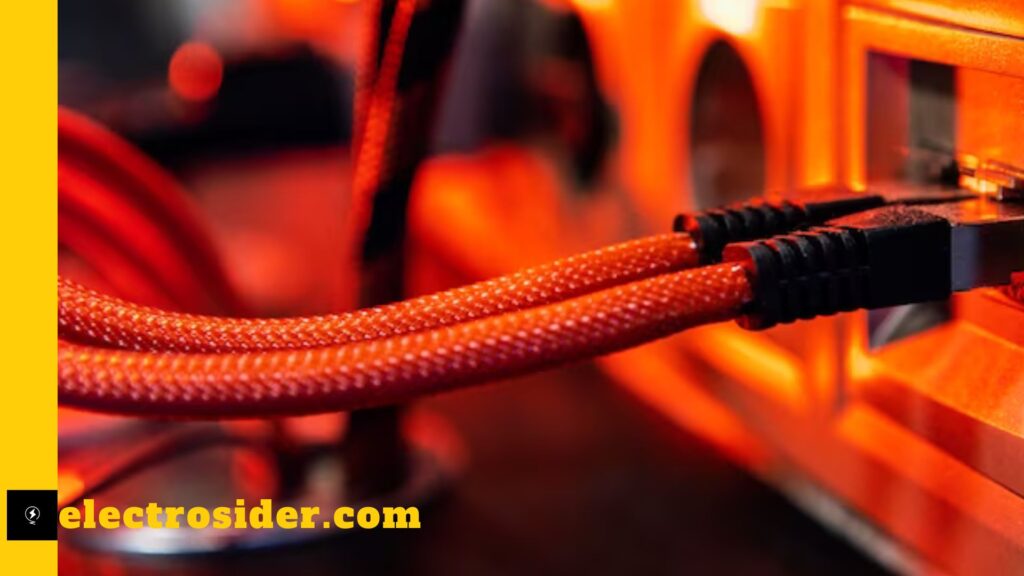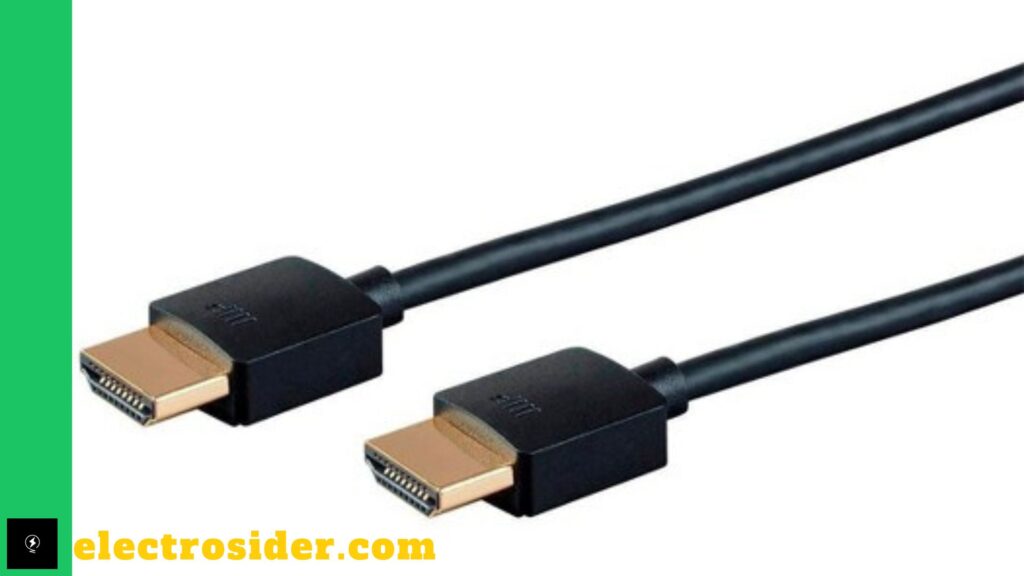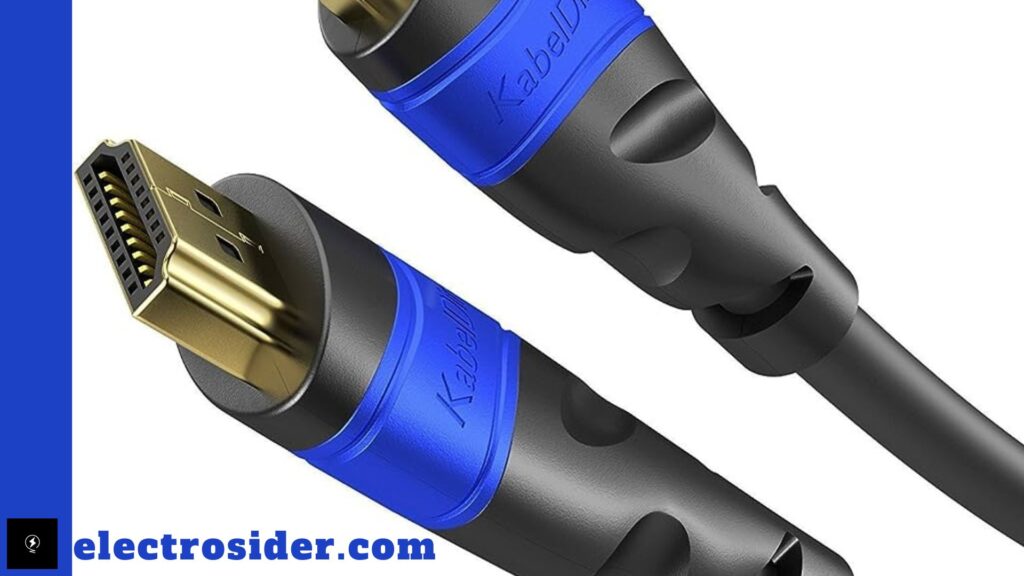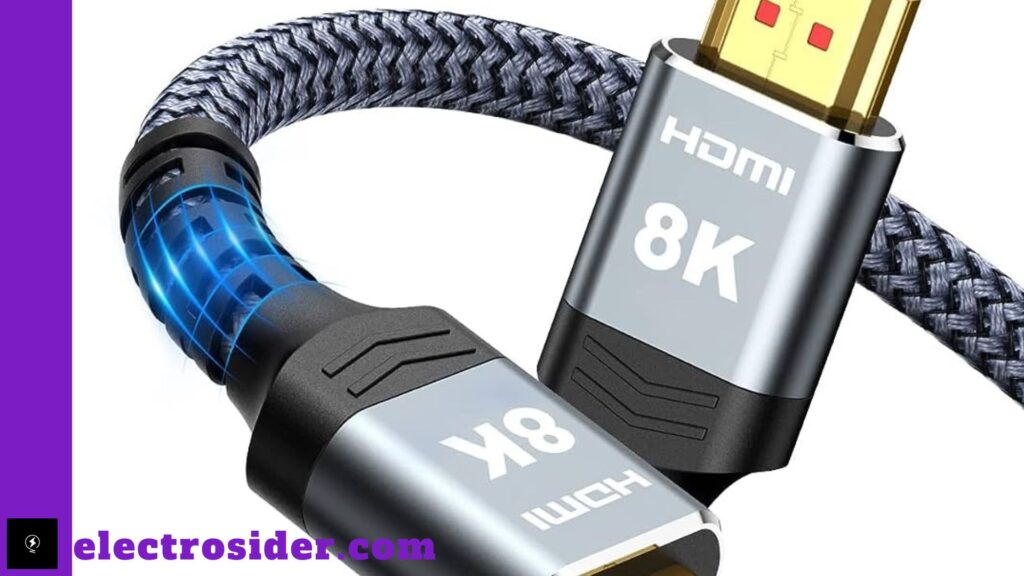Introduction:
High-definition multimedia interface (HDMI) cables are an essential medium for transmitting improved music and video across a variety of devices. Understanding the wide range of HDMI cable types, their applications, and an abundance of advantages they offer can dramatically improve your multimedia interactions whether you’re a tech enthusiast or a regular user. This detailed blog post is deeply into the world of HDMI cables, covering an intensive examination of their various varieties, realistic usage scenarios, and the myriad benefits they offer.

Types of HDMI Cables:
There are many different types of HDMI cables, each designed to meet particular needs and take use of particular skills. We provide a thorough explanation of the most popular varieties of HDMI cables below:
HDMI 1.4:
- capable of supporting HD resolutions, such as 720p and 1080p.
- has an integrated Ethernet data line and capability for the delivery of 3D content.
- establishing connections for devices using standard HD output, such as Blu-ray players, gaming consoles, older HDTVs, and more.
HDMI 2.0:
- enables Ultra High Definition (UHD) material by supporting 4K resolutions at 60Hz and 1080p at 240Hz.
- Enhances color and contrast delivery by introducing High Dynamic Range (HDR) compatibility.
- Capable for Ultra HD Blu-ray players, 4K TVs, and other modern game consoles and gadgets that require greater resolutions.
HDMI 2.1:
- meeting the needs of cutting-edge screens by being able to transmit 8K resolutions at 60Hz and 4K at 120Hz.
- High-quality audio transmission is facilitated by the Enhanced Audio Return Channel (eARC), while gaming performance is enhanced by the Variable Refresh Rate (VRR).
- applications needing top-notch video quality, 8K screens, cutting-edge home entertainment systems, and new-generation gaming consoles.
We’ve handpicked the best HDMI cable here, so you won’t have to worry about 8K pictures or high-performance gaming ever again.You should definitely check out:
TOP 3 BEST HDMI CABLES:
1.Amazon Basics HDMI Cable:(Best overall)

The AmazonBasics HDMI Cable is designed to provide outstanding performance and dependability, making it more than simply a straightforward device connection. Here are some distinguishing qualities and details of this cable:
Grab The Best Deal:
Check on AmazonUSER RATING: 4.7/5
Specifications:
- Supports bandwidth up to 18Gbps, Ethernet, 3D, and Audio Return Channel (ARC) in addition to 4K video at 60 Hz, 2160p, and 48-bit/px color depth.
- Multiple devices can share a single Internet connection without the need for additional Ethernet cables.
- Because the AmazonBasics HDMI Cable is backward compatible with earlier HDMI versions, a variety of devices can be connected without any problems.
- The cable’s plug-and-play design makes setup a breeze. Just connect the cable to your devices, and you’re ready to go.
Benefits of Using the AmazonBasics HDMI Cable:
- Enjoy bright colors and clear graphics of high definition when playing your favorite games, movies, or TV shows. Your auditory immersion is further enhanced by the cable’s audio capabilities.
- Signal interruptions are kept to a minimum thanks to the solid connections made possible by the cable’s sturdy construction and gold-plated connectors.
- The AmazonBasics HDMI Cable can be used for a variety of connections, including those between a game console and a TV, a laptop and a projector, and other HDMI-capable devices.
- The AmazonBasics HDMI Cable is a cost-effective option for those looking for quality on a tight budget because it provides remarkable performance at a competitive price.
2.KabelDirekt HDMI CABLE:

In the world of audio and video cables, KabelDirekt is a well-known brand, and their HDMI cables are proof of their dedication to excellence and innovation. designed to transport high-definition material without interruption.
Grab The Best Deal:
Check on AmazonUSER RATING: 4.7/5
Specifications:
- With multi-layer metal shielding in the connection and additional sheathing of the copper conductors, the 4K HDMI cable has a particular A.I.S. (anti-interference shielding) design for the best interference protection (see image 4 for reference).
- All HDMI to HDMI connections longer than 13 feet can transmit resolutions of up to 4K@60Hz (up to UHD 2160p, 40962160), HDR, 7.1 surround sound, ARC, and even Ethernet data; at lengths of up to 13 feet, they can even transmit 8K@60Hz and 4K@120Hz.
- By supporting ARC, KabelDirekt HDMI cables streamline your audio setup by enabling bi-directional audio transmission between your TV and an ARC-compatible sound system.
- A spectacular 3D viewing experience is guaranteed with KabelDirekt HDMI cables, which also offer deep color to increase the richness and accuracy of color depiction.
Benefits:
- Improve your home theater experience by utilizing KabelDirekt HDMI cables to connect your TV to a Blu-ray player, gaming console, or streaming device. From the convenience of your living room, enjoy breathtaking graphics and engrossing sounds.
- The high-speed transmission required for responsive and fluid gameplay is provided with KabelDirekt HDMI cables, whether you’re a casual gamer or a die-hard aficionado. Low input lag allows you to fully immerse yourself in colourful environments.
3.Highwings 8K Long HDMI Cable:

A premium option in the HDMI cable market, the Highwings 8K Long HDMI Cable was created especially to meet the needs of the modern high-resolution televisions, gaming consoles, and home theater systems.
Grab The Best Deal:
Check on AmazonUSER RATING: 4.7/5
Specifications:
- This 8K HDMI Cable implements the most advanced technology, is 8K@60HZ and 4K@120HZ compatible, clearly displays every particle, and precisely analyzes every data source.
- Highwings 8K HDMI Cable complies with HDMI 2.1 specifications. In comparison to HDMI 2.0, its transmission speed has improved significantly, going from 18Gbps to 48Gbps (6GB/s) straight. As a result, video playback will no longer experience stuck or lost frames.
- This HDMI cable can surpass 4K and produce 8K ultra-high image quality, thus it is not restricted to 4K@60HZ. It can also produce a 4K@120HZ image that is incredibly smooth. Variable refresh rate is supported in its most recent game mode.
Benefits:
- This cable ensures steady and interference-free transmission and ensures that your information reaches your display device in its purest form thanks to sophisticated signal shielding and corrosion-resistant connections.
- Due to its compliance with the most recent HDMI specifications, the Highwings 8K Long HDMI Cable may be used with a variety of gadgets, including 8K TVs, gaming consoles, Blu-ray players, projectors, and more.
Utilisation of HDMI Cables:
A seamless connection between various devices is made possible by the adaptability of HDMI cables, which cuts across many sectors and applications. Here is a thorough examination of their useful applications:
Home Theater:
- Connecting your TV to soundbars, receivers, or home theater systems will provide immersive cinematic experiences.
- Make your living room an entertainment centre by using HDMI connections to broadcast material from gaming consoles, Blu-ray players, and streaming devices.
Gaming Advancements:
- Create a connection between your gaming PC or console and a monitor or TV to enjoy high-definition gaming with less input lag.
- Utilize the Variable Refresh Rate (VRR) of HDMI 2.1 connections to enjoy slicker, more immersive gaming experiences.
Excellent Presentations:
- Increase the quality of conference presentations and corporate presentations by seamlessly connecting laptops or PCs to projectors or large displays.
- Transmit high-definition video and audio seamlessly to make your presentations engaging and memorable.
Benefits of HDMI Cable:
- Uncompressed, high-definition audio and video signals can only be sent using HDMI cables, which ensures unmatched picture and sound quality.
- HDMI cables are made to operate with the least amount of setup and configuration.
- The hot-plugging function enables connectivity and interruptions without the need to shut down the gadget itself.
- With support for the most recent video resolutions and cutting-edge capabilities, HDMI 2.1 cables are a prime example of technology that is looking ahead.
- To improve your acoustic experience, HDMI connections provide a means of transferring multichannel audio formats, such as 5.1 and 7.1 surround sound.
- Due to the fact that HDMI cables are a universal connection standard, they work with a wide variety of gadgets, including TVs, projectors, monitors, gaming consoles, and more.
How to use HDMI Cable:
- Make sure you have the source device (such as a laptop or gaming console), the display device (such as a TV or monitor), and the HDMI cable itself all set to go.
- On your source and display devices, find the HDMI ports. These ports often have the designation “HDMI” and are available in a variety of sizes, including HDMI Type A (standard), HDMI Type C (mini), and HDMI Type D (micro).
- Ensure that original and display devices are turned off before connecting the HDMI wire. By doing this, any potential harm or signal interference is avoided.
- Switch on the original and display gadgets.
Different problems with HDMI Cable and their solution :
High-quality audio and video signals can be sent with HDMI cables in most cases with no problems. But they occasionally run into problems, just like any other technology. These common issues with HDMI cables and potential remedies are listed below:
No Signal or No Picture:
PROBLEM:-Despite connecting the HDMI cable, the display is blank and without a signal.
Solution:
- Verify that both devices are connected to the HDMI wire securely.
- Verify that the HDMI input you have chosen for your monitor is the proper one.
- A different HDMI port on your display might work.
- Make that the output and input settings on both devices are set to the appropriate values.
- To rule out a defective HDMI cable, try the cable on a different device.
Poor Video Quality:
PROBLEM:-The video has visible errors, pixelation, or glitches.
Solution:
- Inspect the HDMI cable for signs of wear or damage. If necessary, exchange it out.
- Make sure the resolution and refresh rate settings on both devices are compatible.
- To adapt to the features of your display, modify the video output settings on your original device.
No Sound:
PROBLEM:-Although there is video, there is no audio.
Solution:
- Ensure that the source and display devices have their volume turned up.
- Make sure your source device’s audio output settings are set up properly so that HDMI audio may be used.
- Check the HDMI cable with a different device to verify if the problem still exists.
Blinking Screen:
PROBLEM:-The display blinks or flickers frequently.
Solution:
- On both ends of the HDMI cable, look for loose or damaged connectors.
- Check to see sure the HDMI ports are spotless and debris-free.
- Change the HDMI cable or port if necessary.
- Make sure the cable isn’t overly twisted or bent.
HDCP Error:
PROBLEM:-An error warning related to High-bandwidth Digital Content Protection (HDCP) appears.
Solution:
- Verify that HDCP is supported by the source and display devices.
- Turning off and unplugging both devices for a short while, then turning them back on, will do a power cycle
- If possible upgrade the firmware on both gadgets.
Audio/Video Out of Sync:
PROBLEM:-The synchronization between the audio and the visual is bad.
Solution:
- Verify your source device or TV for any audio delay settings, and make any necessary adjustments.
- If accessible update the firmware on both of the gadgets.
If you’ve attempted the changes mentioned above but are still having problems, there might be a hardware issue with one of the devices or the cable itself. In these circumstances, you might need to look for professional help or think about replacing the defective component.
Conclusion:
The way we connect to and interact with digital media has been changed by HDMI cables. Understanding the different types, applications, and advantages of cables is crucial for optimizing your audiovisual experiences, whether you’re a cinephile, gamer, or business professional. You may maximize the functionality of your entertainment and technological setup by selecting the appropriate cable for your devices and requirements. Accept the power of HDMI cables and set out on a trip of breathtaking images and all-encompassing audio. THANK YOU.
DISCLAIMER:
The electrosider team writes on topics we believe you’ll find interesting. Due to our affiliate partnerships with Amazon, Electrosider receives a share of the revenue you spend there.
Can I use an older HDMI cable with newer devices?
Even though older HDMI cables can frequently be used with newer devices, they might not be able to handle the most recent features. Use HDMI cables that are compatible with your devices’ specifications for best results. For instance, utilizing an HDMI 2.0 or 2.1 cable is advised if you have a 4K TV and 4K Blu-ray player.
What is the difference between HDMI and DisplayPort?
The two most often used audio and video interfaces are HDMI and DisplayPort. While DisplayPort is frequently found on computer monitors and top-tier graphics cards, HDMI is frequently used for consumer goods like TVs and game consoles. Both provide high-quality signal transmission, although the applications for each can differ.
Is there a difference between mini HDMI and micro HDMI?
Yes, the mini HDMI and micro HDMI connectors are scaled-down copies of the original HDMI connector. Smaller gadgets like tablets, cellphones, and digital cameras frequently employ them. To connect these devices to common HDMI ports, you might require an adapter or cable with the proper connector.










